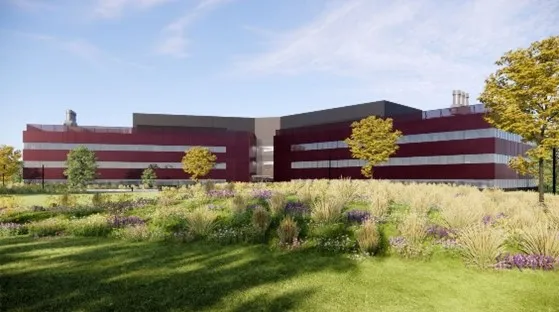Mary Scott Nabers is managing director of the research and consulting firm Strategic Partnerships Inc. and author of “Inside the Infrastructure Revolution – A Roadmap for Rebuilding America.” The opinions are the author’s own.
As demand for modernized and expanded infrastructure increases, one sector stands out with unprecedented momentum: medical facilities. Healthcare buildings are critical components of the nation’s infrastructure, and from what can be seen in planning documents, it appears that almost every region in the US is evaluating some type of healthcare-related upgrade.
The obvious need for these types of projects as America’s population ages presents a wealth of new hiring opportunities across the country. Some of them include:
MD Anderson Cancer Center
Austin, Texas
A $2.5 billion project expand the MD Anderson Cancer Center located at the UT Austin Medical Center, will involve the construction of two hospital towers: one operated by MD Anderson that will be dedicated to cancer treatment and the other by the University of Texas that will offer a wider range of medical services. The new facility will address the growing need for specialist healthcare services in the region.
The integration of two towers into one facility will provide a centralized and streamlined location for patients to receive specialized treatment and additional medical services. Pre-RFP construction services will begin in 2026.
Pullman Regional Hospital
Pullman, Washington
A major expansion and renovation project in Pullman, Washington, is set to break ground in early 2025. Projected to cost between $45 million and $50 million, the Pullman Regional Hospital expansion project aims to position the facility to better manage the increased demand for specialized medical services while maintaining an efficient operation and a high level of care.

Mary Scott Nabers
Permission granted by Mary Scott Nabers
The original hospital was built in 2004 and over the past 20 years healthcare methods have evolved, technology has advanced and the population the system has to accommodate has grown significantly.
The design focuses on creating greater capacity in key areas of the hospital, including the emergency department and surgical spaces. It will also renovate critical areas such as the maternity ward.
The project will incorporate upgraded systems designed to improve medical workflows, optimize space utilization and increase capacity to support a higher volume of services. It will include many critical infrastructure upgrades, including upgrading utilities and communications networks to ensure the facility is equipped for future operational demands.
University of South Carolina Neurological Hospital
Columbia, South Carolina
Officials from the University of South Carolina at Columbia will oversee the construction of a new neurological hospital designed to advance operational efficiency and improve infrastructure to support neurological and neurosurgical care.
At an estimated cost of $50 million, the new facility will provide 115 beds, all designed to function as intensive care units if needed. It will have decentralized nursing stations on each floor, as well as laboratories and research spaces positioned to ensure alignment between academic and operational goals.
Design documents describe a strong focus on long-term sustainability and potential for future growth. Construction is scheduled to start in 2025.
Joint laboratory complex
Harrisburg, Pennsylvania
In early 2025, site preparation will begin in Harrisburg, Pennsylvania, for construction of a $450 million specialty healthcare facility. The Joint laboratory complexwhich will be located on the former Harrisburg State Hospital site, will be designed as a 300,000-square-foot laboratory.
It will support state departments of Health, Agriculture, Environmental Protection and Conservation, and Natural Resources agencies. It will also play a critical role in advancing public health testing, food safety assessments and disease diagnosis, all of which are key components of the state’s health services.
Construction will include controlled environments, biosafety protocols and cutting-edge laboratory technology. Another lab-related project will provide a 90,000-square-foot forensics lab for the Pennsylvania State Police, with more emphasis on the health and life science aspects of the development.
These two new facilities will become a fundamental part of the health services of the state. Construction is scheduled to begin in 2026.

